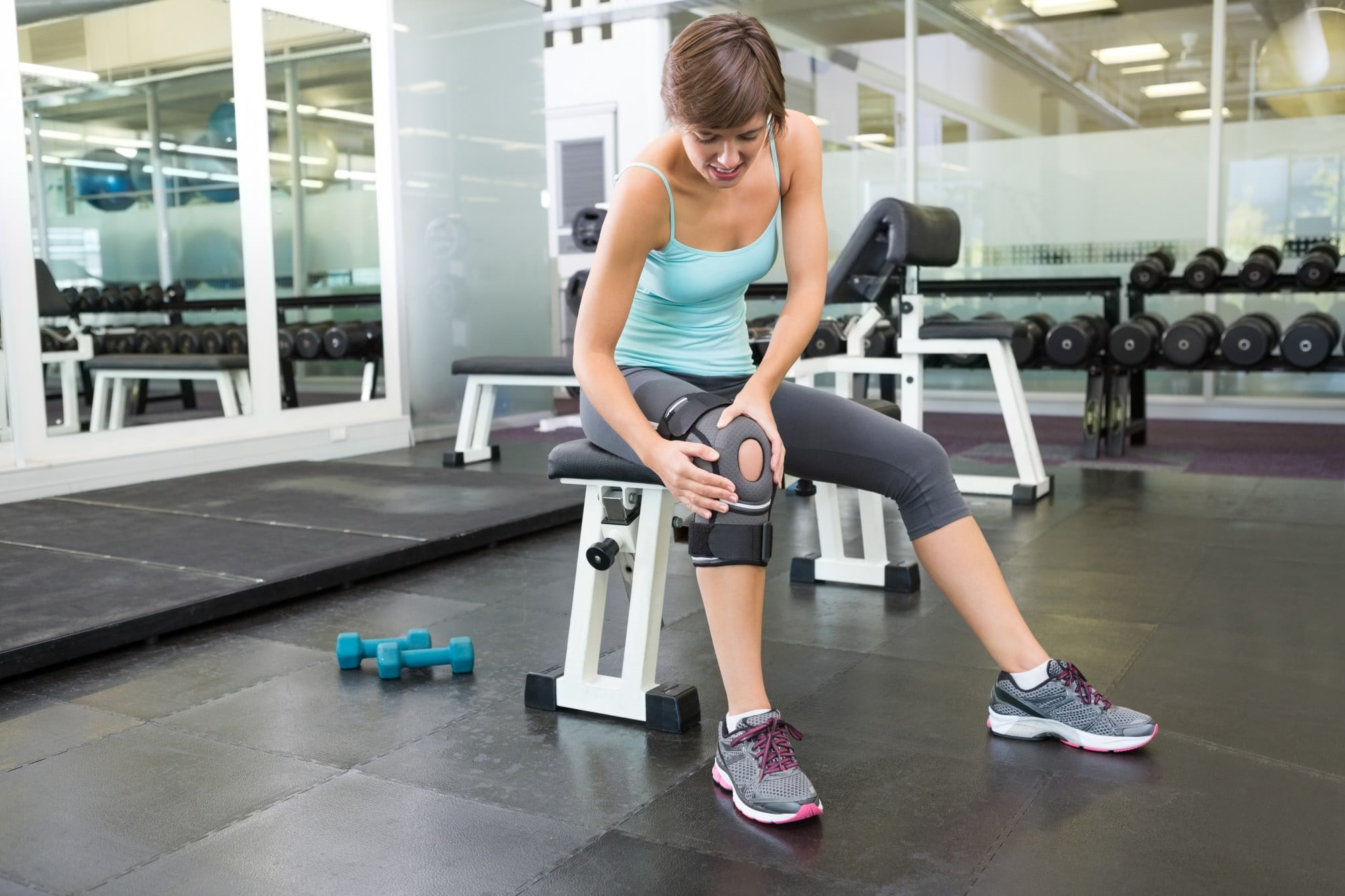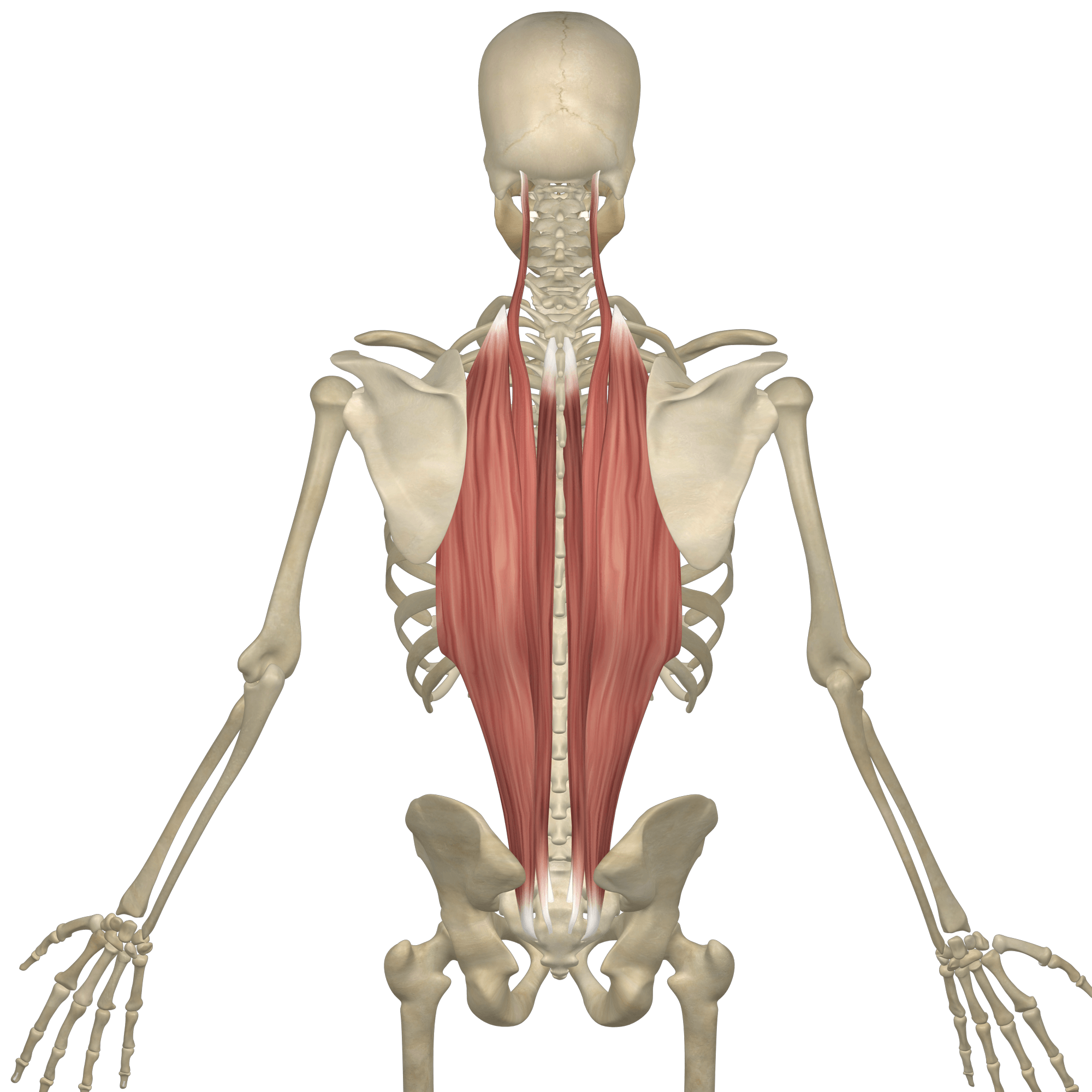Introduction
A strong lower back is the foundation of a powerful and injury-resistant body. Nothing helps you not break into two like the erector-spinae. The erector spinae muscles, which run along your spine, are key players in maintaining good posture, improving athletic performance, and protecting against injuries. In this post, we’ll explore the ultimate erector spinae workout, designed to help you build a rock-solid lower back. Whether you’re an athlete, weightlifter, or just someone looking to improve your posture, this guide will provide the tools you need to strengthen your erector spinae with the best erector spinae workout.
Erector Spinae Workout: Why Should You Care

- Postural Stability: The erector spinae muscles help maintain the natural curve of your spine, keeping you upright and balanced.
- Functional Strength: From lifting grocery bags to performing deadlifts, these muscles are crucial for daily activities and advanced training.
- Injury Prevention: A strong erector spinae reduces the risk of lower back injuries, which are among the most common complaints in both athletic and non-athletic populations. Thus, the use of erector spinae workouts will prevent back injuries from plaguing your lifting career. As someone who pulled their back muscles twice, the common cause seemed to be an erector-spinae weakness. So, take it from someone who has been there, done that. This muscle does not deserve to be ignored.
What is the Erector Spinae?
The erector spinae is a group of muscles and tendons that extend all the way down the vertebral column from the lower back to the neck. These muscles are responsible for straightening and rotating the back, making them crucial for maintaining an upright posture and supporting movements that involve bending and lifting. Ever felt a twinge in your back from bending over? The type that makes you feel like an old man? Odds are these muscles are to blame. Having a solid erector spinae workout not only contributes to a strong and stable core but also plays an important role in reducing the risk of lower back pain and injuries.
Anatomy of the Erector Spinae:

- Spinalis: The innermost muscle, closest to the spine. It primarily aids in extending the vertebral column.
- Longissimus: Located in the middle, this muscle helps with both the extension and lateral flexion of the spine.
- Iliocostalis: The outermost muscle, which helps in the extension, lateral flexion, and rotation of the spine.
Understanding Muscle Function:
There are three main modes of muscular function, which although they may perform completely opposite reactions, they are still vastly interconnected to your overall health. They are listed below:
- Extension: The primary function of the erector spinae is to extend the spine, helping you stand up straight after bending forward.
- Lateral Flexion: These muscles also assist in bending the torso sideways.
- Rotation: The erector spinae muscles contribute to the rotation of the spine, aiding in movements where the torso twists.
Benefits Of An Erector Spinae Workout

Improved Posture
A strong erector spinae helps maintain proper spinal alignment, which is essential for good posture. When these muscles are well-developed, they support the spine, reducing the strain on other muscle groups and preventing slouching. This is what your parents meant when they say to stand tall. Who knew all this time they were looking out for your erector spinae?
Why Posture Matters:
- Reduced Strain: Proper posture decreases the strain on muscles and ligaments that support the spine, reducing the likelihood of fatigue and discomfort.
- Increased Confidence: Good posture is often associated with increased confidence and presence, which can be beneficial in both professional and social settings.
- Enhanced Breathing: Proper spinal alignment opens up the chest cavity, allowing for deeper and more efficient breathing.
Injury Prevention
Strengthening the erector spinae muscles is crucial for protecting the spine during heavy lifting or intense physical activities. A strong lower back acts as a natural brace, reducing the likelihood of strains, sprains, and other injuries. The Valsalva Maneuver is a perfect example of this brace: where the core is purposely pushed out to strengthen the abdominal cavity to protect the lower back and its musculature.
Common Injuries the Erector Spinae Prevents:
- Herniated Discs: Strengthening these muscles can help prevent the excessive spinal loading that often leads to disc herniation.
- Muscle Strains: By keeping the erector spinae strong and flexible, you can reduce the risk of muscle strains, especially during physical exertion.
- Lower Back Pain: A well-conditioned erector spinae can alleviate and prevent chronic lower back pain, a common issue affecting many adults.
Enhanced Athletic Performance
Whether you’re a runner, lifter, or martial artist, a powerful erector spinae enhances overall performance. These muscles are involved in many athletic movements, from sprinting to squatting, making them essential for athletes seeking to improve their game.
Sports and Activities Benefiting from a Strong Erector Spinae:
- Powerlifting: Provides the foundation for heavy lifts like deadlifts and squats. Again, the Valsalva Maneuver is crucial for powerlifters to protect themselves when hitting massive PRs.
- Martial Arts: A strong lower back supports powerful strikes and stability during grappling. As someone who has been thrown quite a lot in a grappling sport, I thank myself every day that my lower back is able to take the brunt of it.
- Running: Proper posture and spinal alignment, aided by a strong erector spinae, improves running efficiency and reduces fatigue.
Erector Spinae Workout: The Best Erector Spinae Exercises
1. Deadlifts

How to Perform:
- Stand with your feet shoulder-width apart and grip the barbell with both hands, keeping your back straight.
- Engage your core, hinge at the hips, and lift the barbell off the ground by straightening your legs and pulling your shoulders back.
- Lower the barbell back to the ground in a controlled manner, maintaining a neutral spine.
Tips:
- Focus on using your glutes and hamstrings to lift the weight, while keeping your erector spinae engaged throughout the movement.
- Avoid rounding your back, as this can lead to injury.
Why Deadlifts are Essential:
- Full-Body Engagement: Deadlifts are a compound movement, meaning they work multiple muscle groups, including the erector spinae, glutes, hamstrings, and core.
- Functional Strength: Deadlifts mimic real-life movements, making them highly effective for building functional strength. After all, everyone’s constantly picking up things from the ground. Might as well get better at that too, right?
2. Hyperextensions

How to Perform:
- Lie face down on a hyperextension bench with your ankles secured.
- Cross your arms over your chest or place them behind your head.
- Slowly raise your upper body until it’s in line with your lower body, squeezing your lower back muscles at the top.
- Lower yourself back down in a controlled motion.
Variations:
- Use a weight plate held against your chest for added resistance.
- Perform the exercise on the floor if you don’t have access to a hyperextension bench.
Targeted Muscle Activation:
- Hyperextensions isolate the erector spinae more than many other exercises, allowing for focused strengthening and endurance building.
3. Good Mornings

How to Perform:
- Stand with your feet shoulder-width apart, holding a barbell across your upper back.
- Keep your back straight, hinge at the hips, and lower your torso until it’s nearly parallel to the floor.
- Return to the starting position by engaging your hamstrings and lower back.
Benefits:
- Good mornings target the entire posterior chain, including the erector spinae, hamstrings, and glutes.
Exercise Caution:
- Due to the forward hinge involved in good mornings, it’s crucial to start with light weights to avoid overstressing the lower back. Ensure your form is perfect before progressing to heavier loads. In fact, I would argue that go heavy on good mornings is merely asking for injury. You can still get just as good of a workout from lighter weights, and more reps, which will cause muscular hypertrophy and protect the bones, tendons, and ligaments with more muscle.
4. Rack Pulls
How to Perform:
- Set the barbell on a rack at knee height.
- Stand with your feet shoulder-width apart, gripping the bar with both hands.
- Engage your core and lift the bar by straightening your legs and pulling your shoulders back.
- Lower the bar back to the rack in a controlled motion.
Differences from Deadlifts:
- Rack pulls allow you to lift heavier weights with less strain on the lower back, making them ideal for focusing on the erector spinae. They’re essentially a deadlift without the initial pull, just the hinge.
Benefits Over Deadlifts:
- Reduced Range of Motion: Rack pulls focus on the upper part of the deadlift movement, which specifically targets the upper erector spinae and traps.
- Strength Development: The ability to lift heavier weights during rack pulls helps in building maximal strength, particularly beneficial for powerlifters.
5. Back Extensions on a Stability Ball

How to Perform:
- Place your stomach on a stability ball with your feet against a wall for support.
- Cross your arms over your chest or place them behind your head.
- Lift your upper body until it’s in line with your lower body, squeezing your erector spinae at the top.
- Lower yourself back down in a controlled motion.
Advantages:
- The stability ball adds an element of instability, which engages the erector spinae muscles more effectively.
Why Use a Stability Ball:
- Core Engagement: The instability of the ball requires more core activation, making the exercise more comprehensive. Having the core and the lower back work together for motor function can significantly improve athletic output as well.
- Increased Flexibility: This exercise also improves flexibility in the lower back and spine, reducing stiffness and enhancing overall movement.
Erector Spinae Workout: Additional Erector Spinae Exercises
6. Romanian Deadlifts

How to Perform:
- Stand with your feet hip-width apart, holding a barbell with an overhand grip.
- With a slight bend in your knees, hinge at your hips and lower the barbell down your legs.
- Stop when you feel a stretch in your hamstrings, then return to the starting position.
Benefits:
- Focuses on the hamstrings and glutes while still heavily involving the erector spinae, making it an excellent addition to your lower back routine.
7. Supermans
/Superman-Exercise-GettyImages-1066259424-ac163090840e4192a6d6f2f054d331d8.jpg)
How to Perform:
- Lie face down on a mat with your arms extended in front of you.
- Simultaneously lift your arms, chest, and legs off the ground as high as possible.
- Hold the position for a few seconds, then slowly lower back down.
Benefits:
- This bodyweight exercise targets the erector spinae while also engaging the glutes and shoulders. Essentially, your lower back is now bearing the full weight of your body, and so it must flex accordingly to withstand the strain, growing the muscle in the process.
Creating an Effective Erector Spinae Workout Routine
Warm-Up
Always begin your workout with a dynamic warm-up to prepare your muscles and joints. And I mean always. Stretching before a workout significantly reduces the chance of a lifting injury. This could include exercises like cat-cow stretches, bird-dogs, and light cardio to increase blood flow and reduce the risk of injury.
Dynamic Warm-Up Movements:
- Cat-Cow Stretches: Mobilize the spine and warm up the erector spinae.
- Bird-Dogs: Engage the core and stabilize the lower back.
- Light Cardio: Increase heart rate and improve circulation to the muscles.
Sample Erector Spinae Workout Routine
- Deadlifts: 4 sets of 6-8 reps
- Hyperextensions: 3 sets of 10-12 reps
- Good Mornings: 3 sets of 8-10 reps
- Rack Pulls: 4 sets of 6-8 reps
- Back Extensions on a Stability Ball: 3 sets of 12-15 reps
Cool Down and Stretching:
- Finish your workout with static stretches for the lower back, hamstrings, and glutes to promote flexibility and recovery.
- Include stretches like the seated forward bend, pigeon pose, and lower back twist.
Frequency and Progression
For optimal results, aim to train your erector spinae 2-3 times per week. Gradually increase the weights and intensity as your strength improves, but always prioritize form to prevent injuries. I’m going to say this again in gym bro language. Don’t ego-lift. It doesn’t help you, and it looks anything but impressive while you’re doing it. If anything, it really does just make you look like you don’t know what you’re doing.
Training Frequency Recommendations:
- Beginners: Start with 2 sessions per week, allowing adequate recovery time.
- Intermediate/Advanced: Progress to 3 sessions per week, incorporating variations of the exercises to target the muscles differently.
Progression Tips:
- Gradual Load Increase: Increase weights incrementally to avoid overloading the muscles.
- Exercise Variation: Introduce new exercises or variations every few weeks to keep the muscles challenged.
Erector Spinae Workout: Common Mistakes to Avoid

Rounding the Back
One of the most common mistakes during erector spinae exercises is rounding the back, which can lead to injury. Always keep your spine in a neutral position and engage your core to protect your lower back. If that means that you have to decrease the weight, then there is no shame in decreasing the weight. Eventually, you will work back up to your previous weight, but this time, with the form and technique to ensure your lifting safety.
How to Correct:
- Focus on maintaining a neutral spine, with your head aligned with your back.
- Engage your core muscles throughout the exercise to support your lower back.
Lifting Too Heavy
We’re going to reiterate this one more time. While it’s important to challenge yourself, lifting weights that are too heavy can compromise your form and increase the risk of injury. Start with a weight that allows you to perform each exercise with proper form, and gradually increase the load as you become stronger.
When to Adjust Weights:
- If your form starts to break down during a set, it’s a sign that the weight is too heavy.
- Prioritize control and stability over the amount of weight lifted.
Neglecting the Core
The erector spinae work in conjunction with the core muscles to stabilize the spine. Neglecting core training can lead to imbalances and increase the risk of lower back injuries. I say this from experience. Had my core been stronger, it is very likely my injuries would not have occurred. In fact, it was part of my recovery and quickened its healing. So, do not neglect your core. It may be the difference between a healthy you and someone who has to take time off for weeks at least.
Core Exercises to Include:
- Planks: Build core stability and strength, supporting the erector spinae.
- Leg Raises: Strengthen the lower abs, complementing lower back strength.
- Russian Twists: Enhance rotational stability, crucial for a balanced core.
Erector Spinae Workout: Recovery and Stretching

Importance of Recovery
Recovery is a crucial part of any strength training routine. Not just before the workout, but after the workout as well. After an intense workout, your muscles need time to repair and grow stronger. Ensure you’re getting enough rest between workouts and consider incorporating active recovery techniques such as light cardio, foam rolling, or yoga.
Recovery Strategies:
- Active Recovery: Engage in light activities like walking or swimming on rest days to keep blood flowing to the muscles.
- Foam Rolling: Target the lower back and glutes to relieve muscle tightness and improve circulation.
Essential Stretches for Erector Spinae Workout
- Cat-Cow Stretch: Mobilizes the spine and stretches the erector spinae.
- Child’s Pose: Stretches the lower back and relaxes the muscles.
- Seated Forward Bend: Lengthens the entire posterior chain, including the erector spinae.
How to Incorporate Stretching:
- Perform static stretches after your workout to improve flexibility and reduce muscle stiffness.
- Hold each stretch for at least 30 seconds, focusing on deep breathing to enhance relaxation.
Conclusion
The erector spinae muscles play a vital role in maintaining a strong and stable lower back. By incorporating the exercises outlined in this guide into your routine, you can build a powerful foundation that supports any of your fitness goals. Remember to focus on proper form, gradually increase the intensity, and prioritize recovery to achieve the best results. A strong erector spinae will not only improve your posture and performance but also help you stay injury-free and active for years to come.
Take Action Today:
- Start incorporating these exercises into your routine and experience the benefits of a strong, healthy lower back.
- Share this erector spinae workout guide with others who may benefit from building a stronger lower back and improving their overall fitness.




